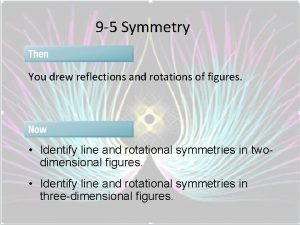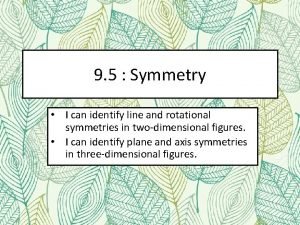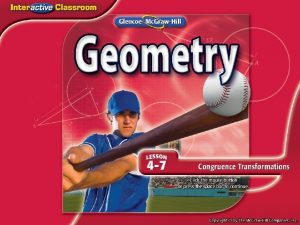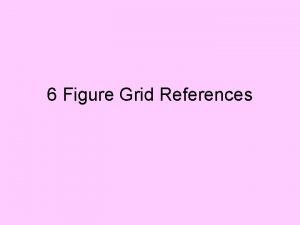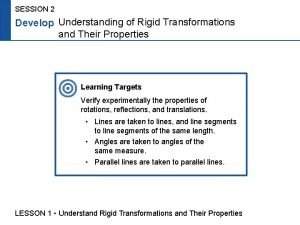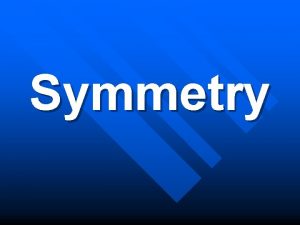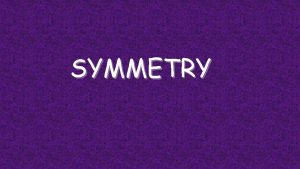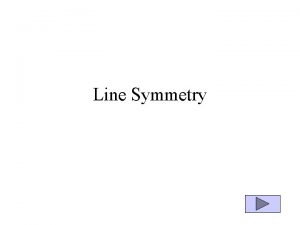Symmetry Line Symmetry A figure has line symmetry




- Slides: 4

Symmetry Line Symmetry: A figure has line symmetry if it can be divided by a line, called a line of symmetry, into two parts that are mirror images of each other. Rotational Symmetry: A figure has rotational symmetry if a turn of 180 degrees or less produces an image that fits exactly on the original figure. Tell whether the figure has line symmetry, rotational symmetry, both or neither. Explain. 1. 2. 3.

Do the following letters have a vertical line of symmetry, horizontal line of symmetry, or rotational symmetry? If it has rotational symmetry, give the measure of the smallest angle and direction of rotation. 4. 5. 6. 7.

Transformations Transformation: Image: A movement of a figure in a plane. The new figure formed by a transformation. In the textbook, the original figure will be BLUE and the image will be RED. Translation: SLIDE Each point of a figure is moved the same distance in the same direction. Reflection: FLIP Rotation: A figure is reflected in a line called the line of reflection, creating a mirror image of the figure. TURN A figure is rotated through a given angle and in a given direction about a fixed point called the center of rotation.

center of rotation The ______________for all rotations in the textbook will be the origin. Rays drawn from the center of rotation through corresponding points on an original figure and its image form an angle of rotation angle called the _______________. Rotations are described by the angle and direction of rotation, clockwise counterclockwise either _________ or _____________. NOTE: a complete circle (rotation) is 360 degrees. Half of a rotation is 180 degrees. 1. Since you can rotate an equilateral triangle three times within the 360 degree turn, divide 360 by 3 to find the angle of rotation. Identify the transformation. If it is a reflection, identify the line of reflection. If it is a rotation, give the angle and direction of rotation. 2. 3. 4.
